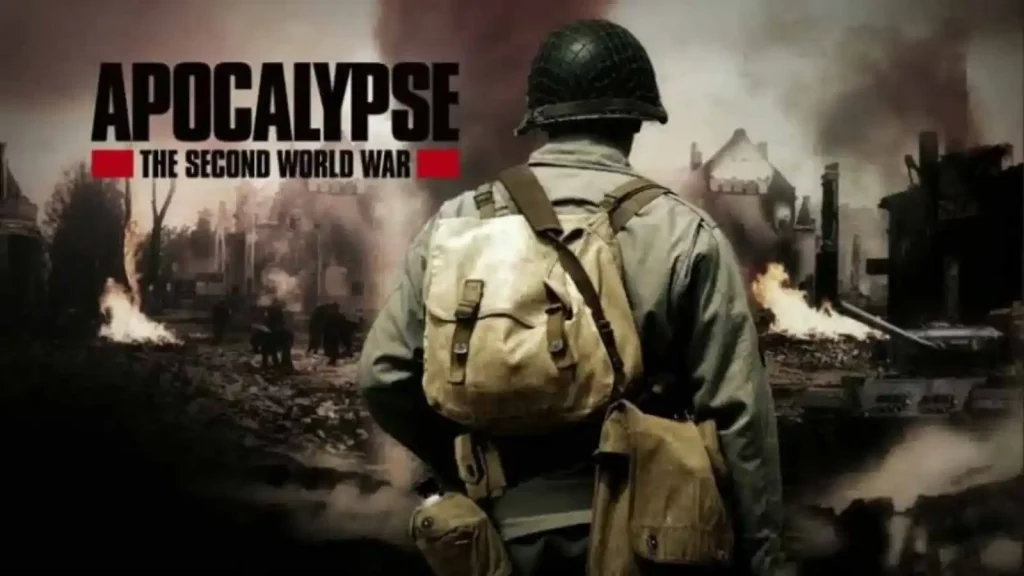The Second World War episode 6 – The enthralling story of the D-Day landings begins with the meticulous planning and preparation by the Allied forces, leading to the historic day when thousands of soldiers bravely stormed the beaches of Normandy. This event was a turning point in World War II, signaling the beginning of the end for the Axis powers, especially Nazi Germany. It was a pivotal moment that led to the eventual liberation of Paris, a city that had suffered under German occupation. The liberation was a symbol of hope and a significant milestone in the fight against tyranny.
Simultaneously, in the east, the Soviet Union was making significant strides. The liberation of Auschwitz by the Soviets was not just a military achievement but a humanitarian landmark, exposing the horrors of the Holocaust to the world. The Soviet forces continued their relentless push towards Berlin, engaging in some of the most intense and decisive battles of the war. Their advance was marked by fierce fighting and strategic maneuvers, culminating in the fall of the German capital.
Despite the surrender of Germany, the war was far from over. In the Pacific, Japan continued to resist the Allied forces with unwavering determination. The conflict in this region was characterized by fierce battles, both on land and at sea, and the unwavering spirit of the Japanese forces. The use of atomic bombs on Hiroshima and Nagasaki marked a dramatic and controversial end to the war in the Pacific. These events led to Japan’s surrender and brought an end to World War II, but they also opened a new chapter in the history of warfare and international relations.
This period in history is not just a tale of military strategy and battles; it is a story of human resilience, the fight for freedom, and the triumph of the human spirit over adversity. The events of World War II reshaped the geopolitical landscape and had lasting impacts on the world, influencing international politics, socio-economic structures, and the collective consciousness of generations.
The Second World War episode 6: An In-depth Analysis
The Prelude to D-Day
The D-Day landings on June 6, 1944, marked a pivotal moment in World War II. This event, known as Operation Overlord, was the largest seaborne invasion in history, involving a massive deployment of Allied forces. Prior to this monumental day, meticulous planning and strategic deception, including the misleading of German forces about the invasion’s location, were crucial for its success.
One key aspect of this planning phase was the creation of a formidable naval force, known as the D-Day fleet, which played an integral role in transporting over 160,000 men across the English Channel to Normandy.
Operation Overlord: The Largest Seaborne Invasion
The morning of June 6, 1944, saw the Allied forces launching an ambitious assault on the beaches of Normandy. The importance of D-Day cannot be overstated; it signified the opening of a second front against Nazi Germany and marked the beginning of the end for Hitler’s regime.
The National WWII Museum provides an insightful exploration of D-Day’s significance, detailing the heroic airborne landings at Omaha beach and the other four beaches – Utah, Gold, Juno, and Sword.
The Battle of Normandy
Following the initial landings, the Allied forces engaged in the Battle of Normandy. This campaign was a grueling test of endurance and strategy, as the Allies faced the formidable Atlantic Wall and German defenses. The OT Baie du Cotentin’s overview of the D-Day landings highlights the scale and intensity of this battle, which was crucial in liberating occupied Europe.
Strategic and Tactical Brilliance
The success of D-Day was not just a result of sheer force but also of strategic brilliance. The planning and execution of Operation Overlord were examples of warfare planning at its finest. Everand’s book on the D-Day landings sheds light on the extensive preparations that went into this operation.
The Aftermath and Legacy
The D-Day landings and the subsequent campaign played a critical role in achieving Allied victory in the Second World War. The Imperial War Museum discusses why D-Day was so crucial to the Allied victory, emphasizing the scale and impact of this operation.
The Normandy Campaign continued beyond D-Day, with several weeks of intense fighting, leading to the liberation of Paris and eventually contributing to the surrender of Germany.
Frequently Asked Questions – The Second World War episode 6
What Was the Strategic Significance of D-Day?
D-Day was vital in opening a second front against Nazi Germany, diverting resources and attention from the Eastern Front, and marking the beginning of the end of World War II in Europe.
How Many Soldiers Were Involved in the D-Day Landings?
Approximately 160,000 Allied soldiers landed on the beaches of Normandy on D-Day, supported by a massive naval fleet and air cover.
What Were the Key Beaches of the Normandy Landings?
The key beaches of the Normandy landings were Utah, Omaha, Gold, Juno, and Sword, each with its unique challenges and strategic importance.
As we reflect on the events of D-Day and the Normandy campaign, it’s essential to remember the bravery and sacrifices of those who fought. Their efforts not only shaped the outcome of the Second World War but also redefined the course of world history. For more detailed insights into the planning and execution of D-Day, Army University Press’s documentary is an excellent resource.




